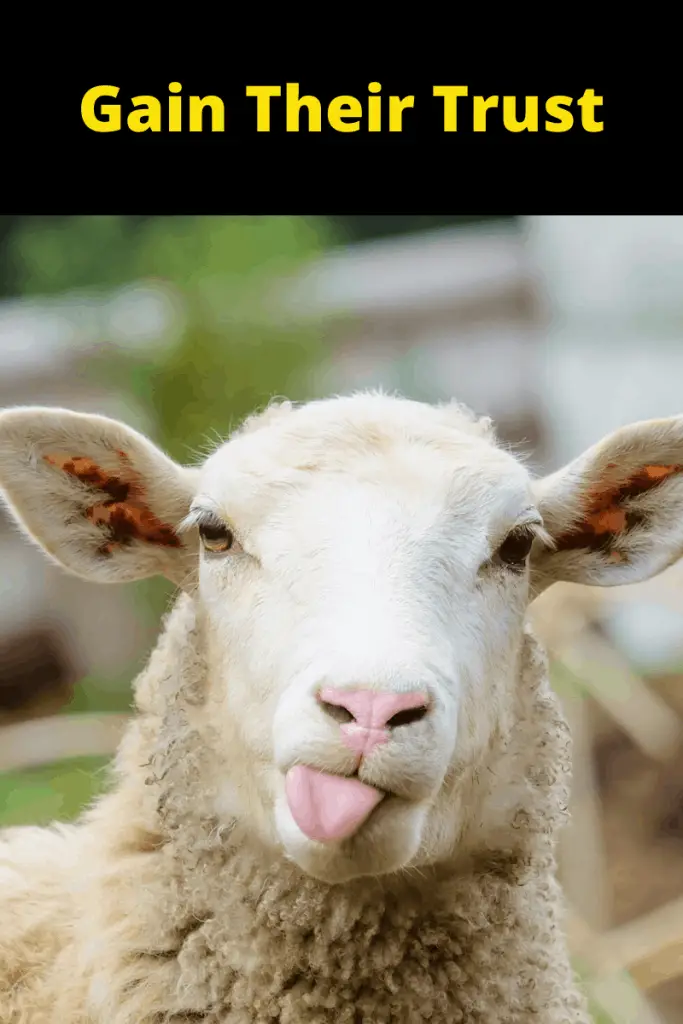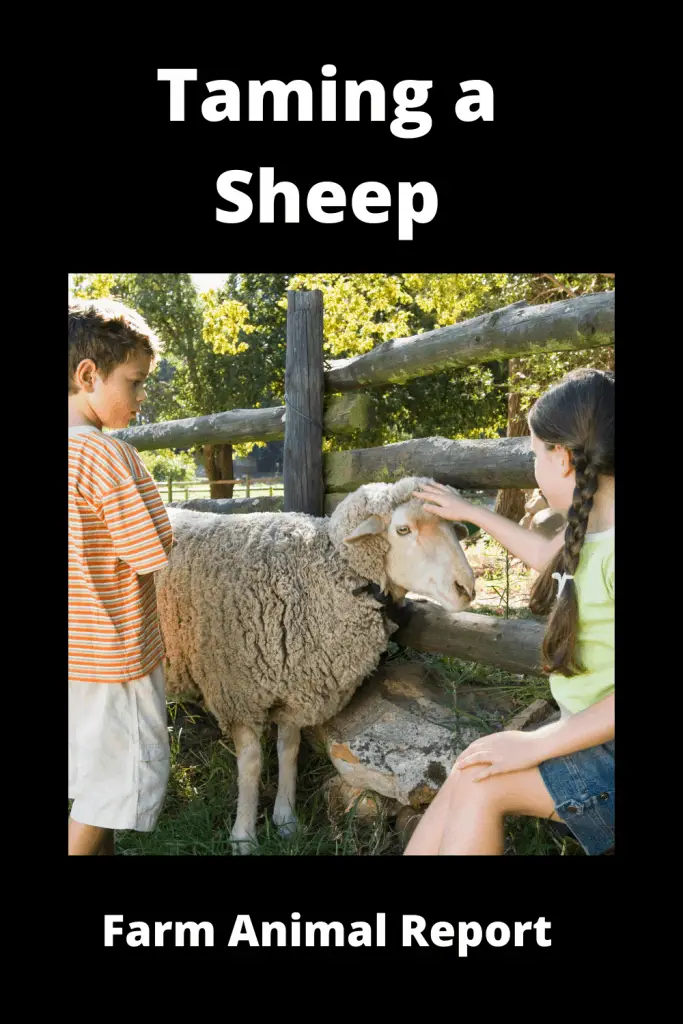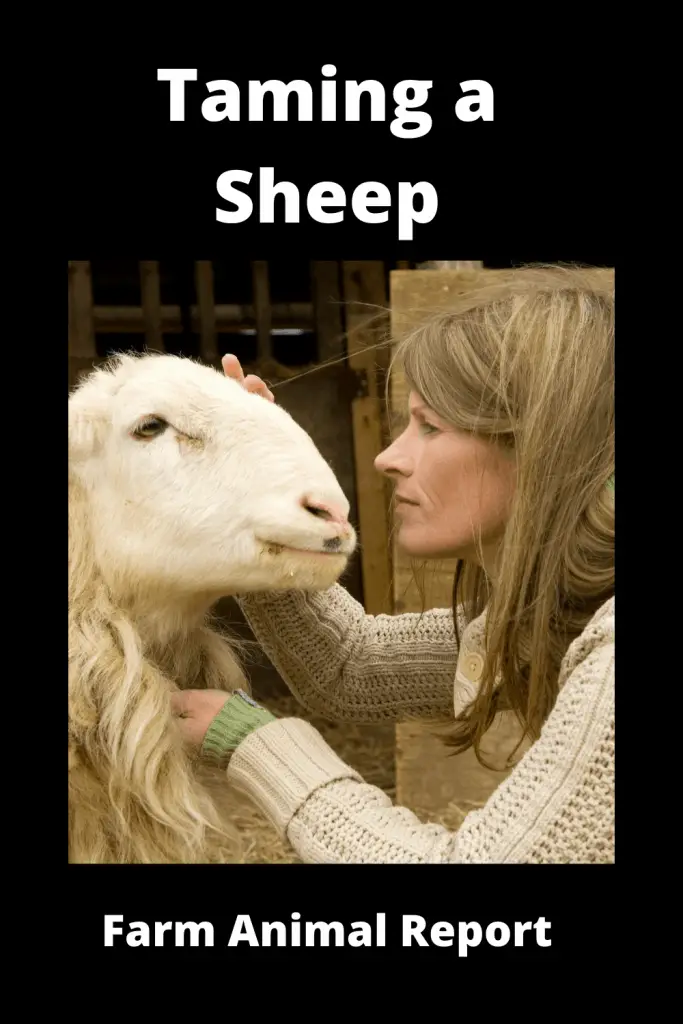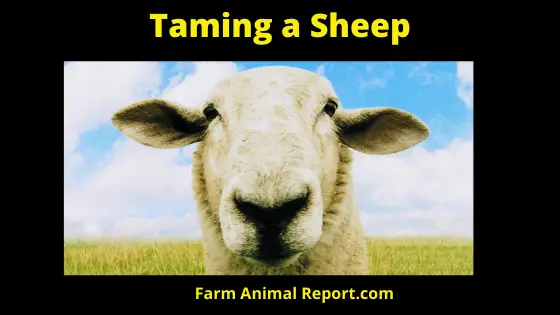How to Tame Sheep
As General Rule to tame a sheep follow these tips. 1) move slowly with clear intent and are gentle 2) Feed Sheep Out of your hand 3) the tamest sheep adore having their chins, backs, and especially their chests scratched. 4) Spend time with them every day
How to Tame a Sheep – Sheep, for the most part, aren’t wired to become cuddly pets like dogs or even goats. Their wild ancestor, the mouflon, was strongly wired to flee in the face of danger. Modern sheep still do.
Even the tamest pets respond to scary stimuli like humans planning to trim their hooves or dose them with dewormer. This makes them trickier to handle than most folks think. Sheep also have a strong flocking instinct. It’s more prevalent in some breeds than others but it’s always there.
Researchers find that most sheep are continually stressed unless they are kept in a flock of at least three sheep, so keeping a single pet sheep is rarely an option. Sheep are easier to tame if you understand their needs and behaviors.
Time alone Together Training
Sheep are more fearful than goats and they are not wired to automatically tolerate human touch, so first, you have to gain your pupil’s trust. Take your trainee and a companion animal to a comfortable area where they can stay away from the main flock for a week or so.

Secrets For Taming a Sheep
- Start by teaching your sheep to eat from your hand. Plan to work with them several times a day.
- Go into their area and sit directly on the ground, a small stool, or an overturned feed or water tub, so that you’re down at sheep’s eye height. Bring a book or something to do and ignore them altogether on the first day. Curiosity will bring them over to sniff you.
- On the second day, bring a feed pan and some grain in a small container. Place the pan in front of you, then ignore the sheep. When they approach, still not looking at them, drizzle a handful of feed into the pan. Do this several times each visit.
- On the third or fourth day, depending on how trusting they seem, instead of drizzling the feed, hold it in your palm with the back of your hand against the bottom of the pan. Be patient. Eventually, the sheep will venture a nibble. Hold your hand against the pan until the sheep readily eat from your hand. Then hold your hand at the sheep nose level.
- Next, turn your sheep and her friend back in with the main flock. Walk among them later and offer the sheep you’ve hand-trained some grain. If she accepts it, your sheep is ready for further training.
- Now, at least once a day for several days, take your sheep to an enclosed area. Lead the flock with a bucket of feed, then turn them back out to pasture one at a time, until she’s the last one remaining. Talk to her quietly and feed her from your hand until she’s comfortable being by herself. Now she’s ready for training.
- It’s best to work in a very small area. Either inside or in a small pen in the field. This forces the issue more and gives the sheep fewer options to ignore you and run away. They have to get used to you being near them . It works for many sheep, but not all. Try to feed them by hand, they will soon be more relaxed approaching you and while they are eating you can begin to stroke and touch them. They should soon get more used to contact with you.
- Crouch, kneel, even sit down with them. You will find your sheep much more relaxed and willing to come up to you when you get on their level. Don’t stand up until they are relaxed with you. That way you are not towering over them.
- Make sure in the beginning you move slowly with clear intent and are gentle.
- Don’t grab or chase after them if they move away. Sheep are flight animals and spook easily.
- Sheep just love being scratched. Start on their chin, neck, and between their front legs and once they are more confident some will accept having their backs and bellies scratched. They will approach you and stand for hours to be scratched and cuddled.
- Spend time with them every day, keeping the same routine and they will quickly learn your intentions and begin to enjoy your company. Sheep are all different and some take a lot more time and patience than others but don’t ever give up.
Check Our Amazons Resources on Sheep
Most tame sheep adore having their chins, backs, and especially their chests scratched.
Once your pupil confidently eats from your hand, quietly attempt to gently scratch her back or chest; it may take several tries, but once she discovers how nice this feels, she’ll be putty in your hands.
See Our Extensive Guide – 16 Ways to Make Money Sheep Farming
Handling Sheep and Lambs
It is usually necessary to handle sheep several times per year for various reasons. Without an easy way to handle sheep and lambs, important tasks often get delayed or forgotten. Improper handling causes needless stress to both the sheep and the handler.
Calm animals are easier to handle that agitated and stressed Sheep
Basic Concepts of Livestock Handling
A thorough understanding of sheep behavior is the first step towards developing an effective method of handling sheep. Their strong flocking and following behavior tends to make sheep easy to handle, relative to other livestock species. Conversely, sheep will prove difficult to handle if you force them to act in ways that are not natural for them.
Flight zone
One of the most basic concepts in handling sheep and other livestock is the flight zone. All animals have a flight zone. A flight zone is an animal’s personal space. It is where the animal feels comfortable and unthreatened. When a person is outside the animal’s flight zone, the animal will turn and face the handler.

It is best to work on the outside of an animal’s flight zone. If the flight zone is penetrated too deeply, animal behavior can be unpredictable and dangerous. Sheep are not large, but they are quick on their feet and strong for their size. Pile-ups can result in small enclosures, causing injury to the animals, especially the small or weak ones.
The size of an animal’s flight zone varies. It depends on how wild or tame the animal is. Sheep that have not had much human contact will have a large flight zone, whereas pet sheep may not have a flight zone.
Sheep confined to a small space will have a smaller flight zone than sheep confined to a large area. Frequent, gentle handling tends to diminish the size of the flight zone. At the same time, sheep have excellent memories and can remember rough handling.
Point of Balance
The point of balance is another important livestock handling concept. The point of balance is at the animal’s shoulder. All species of livestock will move forward if the handler steps behind the point of balance.
They will back up if the handler stands in front of the point of balance. Many people make the mistake of standing in front of the point of balance while trying to get livestock to move forward through a chute. Sheep will usually refuse to move if they see people up ahead.
Moving sheep
Very often, you need to move sheep, to bring them in from a pasture, or to move them to another pasture. If you don’t have a herding dog to fetch the sheep, you can train the sheep to come to a vocal command or rattle of the feed bucket.
Most sheep will come when they think they are going to get grain to eat. If these don’t work, it will be necessary to go out to the field to get the flock and either drives them from behind or lead them with a feed bucket or lead sheep.
Pet sheep are difficult to drive and make good lead sheep. If the sheep aren’t familiar with where you want to move them, you may need several people to act as herders. Always move sheep slowly, calmly, and quietly. Do not allow splinter groups to develop.
To move individual sheep, hold the sheep under its jaw and push its dock. Small numbers of sheep can be halter-broken for ease of moving and handling. Attempting to lead a sheep that is not halter-broken is usually a futile exercise.

Catching sheep
There are situations in which you need to catch an individual sheep. If you do not have a handling system to assist you, you can use gates and panels to make a small catch pen. You should make the pen small enough so that you do not have to chase the sheep.
The smaller the catch pen, the easier it will be to catch the sheep. No one likes to chase sheep and the more you chase sheep, the harder it will become to catch them, not to mention the unnecessary stress you are causing both of you.
Once the sheep are in the catch pen, maneuver them into a corner and use your arms or a portable gate to form a visual barrier. Always approach sheep calmly and slowly. Cup your hand under the jaw of the sheep you want. Grab the bony part of the jaw, not the throat.
Point the sheep’s nose upward to stop its forward motion. If you keep the sheep’s head up, you will be able to maintain control of it. Sheep have a lot more power when their head is down. You can also use a shepherd’s crook to catch a sheep by the neck.
Restraining sheep
There are many different ways to restrain a sheep, depending upon what you need to do to it. Once you’ve caught the sheep, you can press it against a wall or straddle it to limit its movement. A halter is one of the easiest ways to restrain a sheep for treatment or close inspection.
Tipping sheep
If you want to trim a sheep’s hooves or gain access to its underside, you’ll probably want to set the sheep on its rump. Setting a sheep on its rump is called tipping. Sheep in this position struggle very little and are easy to work with.
To rest comfortable on its rump, the sheep should be off-center, so that it is sitting on its hip and not in the dock. If the sheep struggles, you can place a hand on its brisket to move it into a better position. There are several ways to tip a sheep. The method you use often depends upon the size of the sheep. Here’s a common method for tipping sheep.
Pigeon Breeder Associations
| Pigeon Associations | Location | Link |
|---|---|---|
| National Pigeon Association | USA | NPA |
| American Pigeon Racing Union | USA | APRU |
| Midwest Homing Pigeon Association | USA | MHPA |
| Royal Pigeon Racing Association | UK | RPRA |
| Royal Pigeon Racing Association | UK & Ireland | RPRA |


